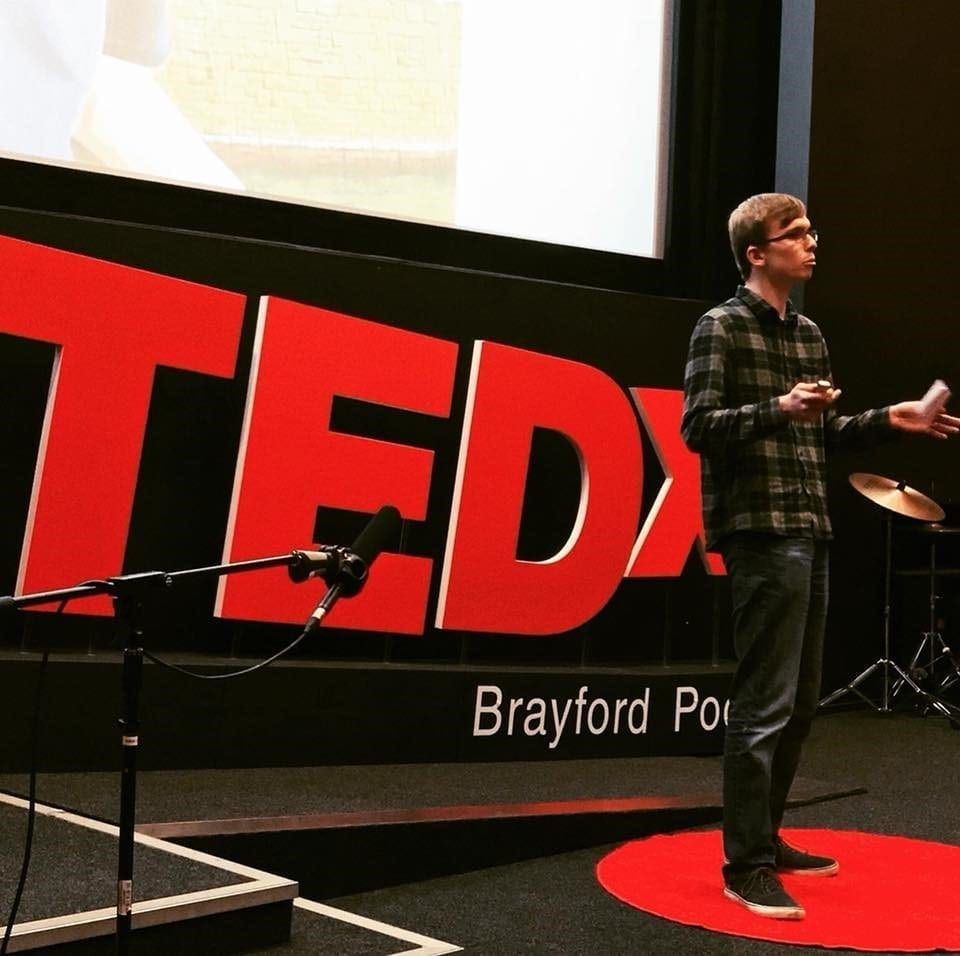
From script to stage: Speaking at TEDxYouth@BrayfordPool
I stand on a large red dot. In my right hand, a gold clicker shines, whilst in my left are two cue cards containing a condensed version of my script. It was less than 24 hours before that I was studying the six pages of my TEDxYouth talk and wondering if my memory would allow me to even give the speech at all.
Saturday, November 4 was the first ever TEDxYouth event in Lincoln (taking place at the University of Lincoln) and marked the final stage in a process which spanned just over a month.
In September, I was told by a friend that TEDxYouth was taking place near me. Knowing that TED and TEDx were both big organisations in the world of public speaking, it wasn’t long before I decided to give it a go, and applied to give a talk on the event’s theme: Creating Our Future.
A short while later, following a brief discussion with the co-curator about my idea, and I received the good news. They liked my proposal I was invited to give a 15-minute talk.
Then came the lengthy process of writing the script, and getting it to time. Earlier drafts hit the half-way mark at a point when I felt like there was nothing else left for me to say. After a couple of email conversations with my mentor, the talk was finished, and I had four days before the rehearsal.
The talk itself was named How to control your labels, and when to let them define you. Without giving too much away, it was all about the identities were given by society (white, gay, disabled, etc.), how we can take ownership of these and the ‘baggage’ that comes with this, and when we should challenge these phrases and help shape the labels we use.
As mentioned previously, I had four days to practice and learn the six pages of my talk. Yet, being a third-year journalism student with many commitments meant that I only had so much time spare, and even then, I wasn’t sure how I should go about it. Do I read the whole piece over and over again? Learn it line-by-line?
So I approached the rehearsal with fear. How could I tell them that I may not be able to deliver my talk since I didn’t have it memorised?
Well, little did I know prior to the rehearsals that I could use cue cards, and so I took the time to condense my talk down into bullet points prior to my talk.
The hours counted down. Nervousness built up, but with it, a burning desire to just get up there and give it my best shot. It was a weird feeling in that I wanted to get up there and start talking, but the nervousness came when I wondered if I would actually be able to do all of my speech on time.
Yet, the wonderful support given by fellow speakers, the curators and friends certainly helped. After a short introduction by the host, Hetain, I made my way to that one particular spot. Cameras and eyes focused on me, I looked at the audience, and I began…
“It all started with an audiology appointment…”



